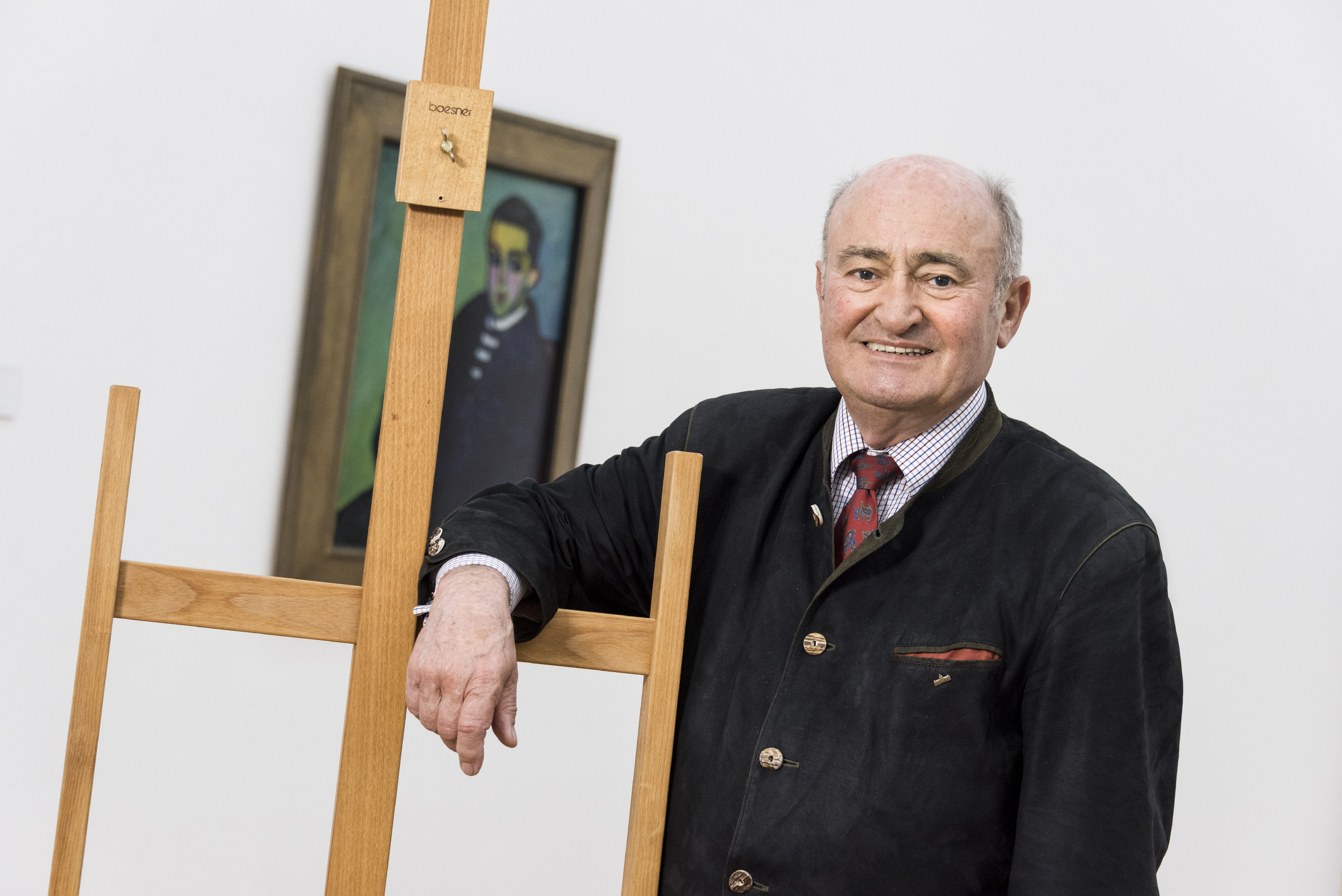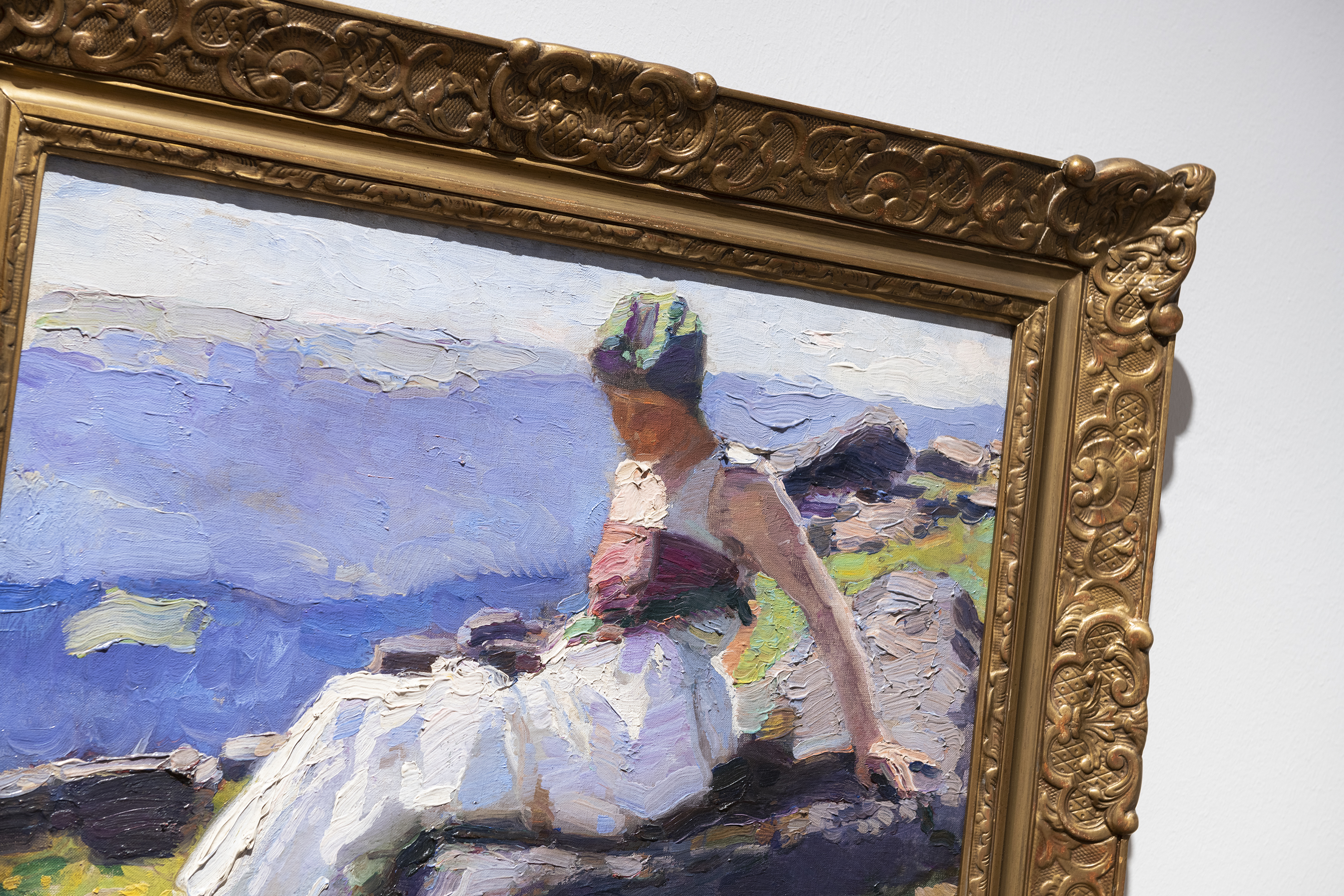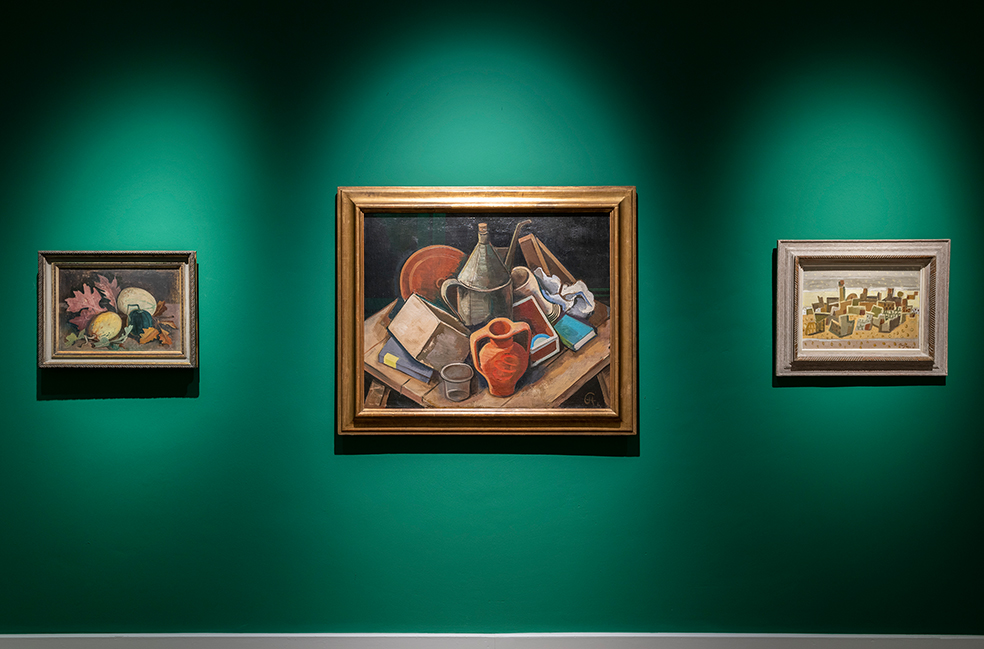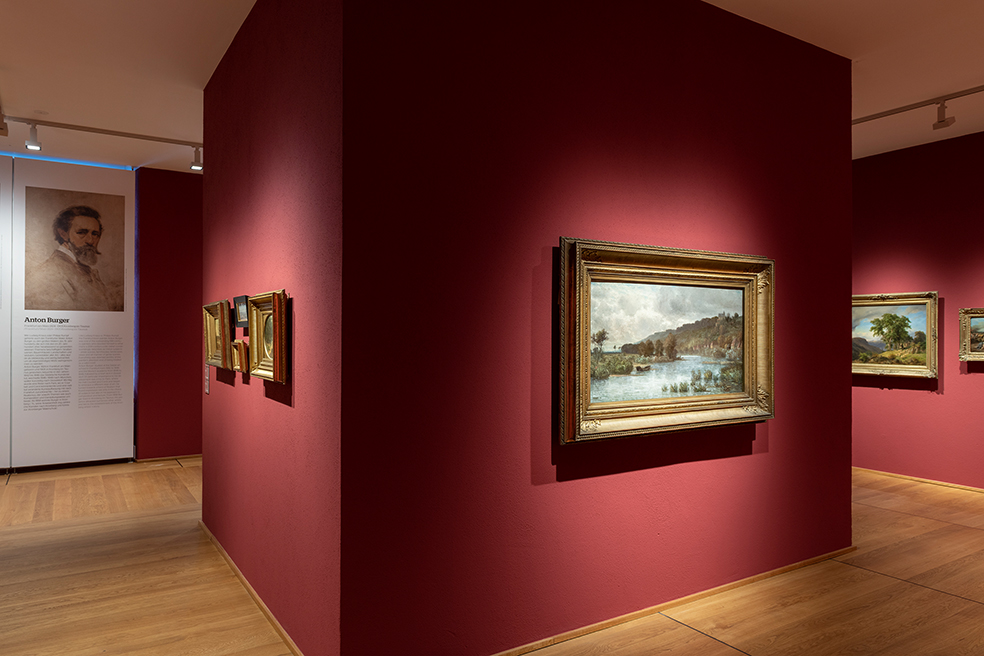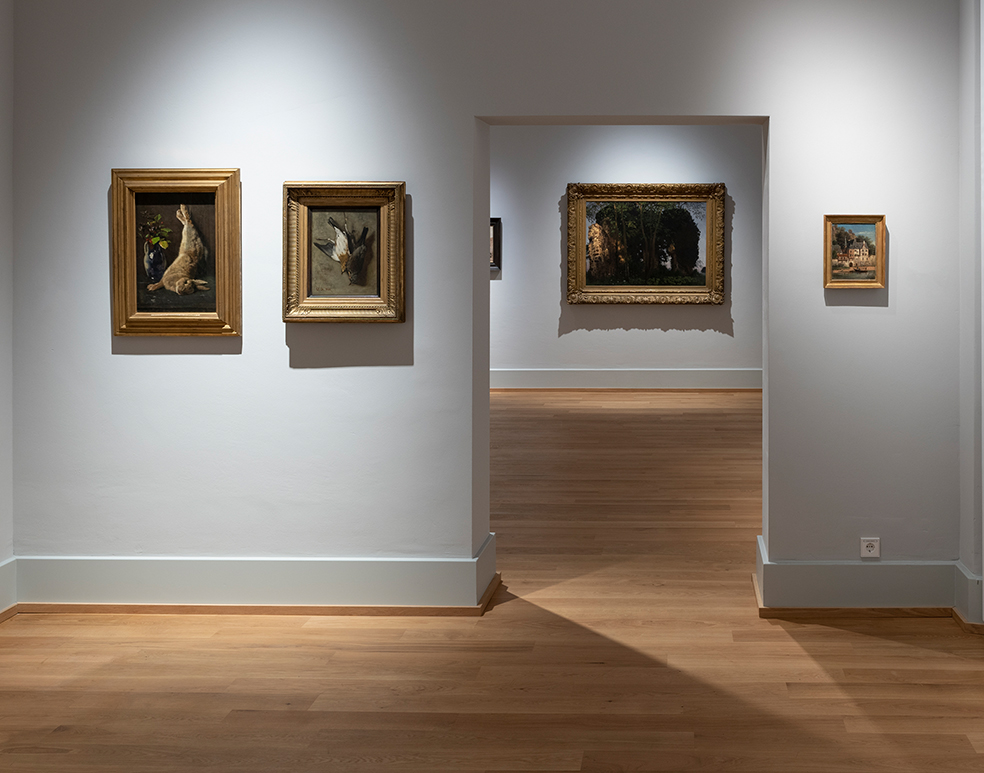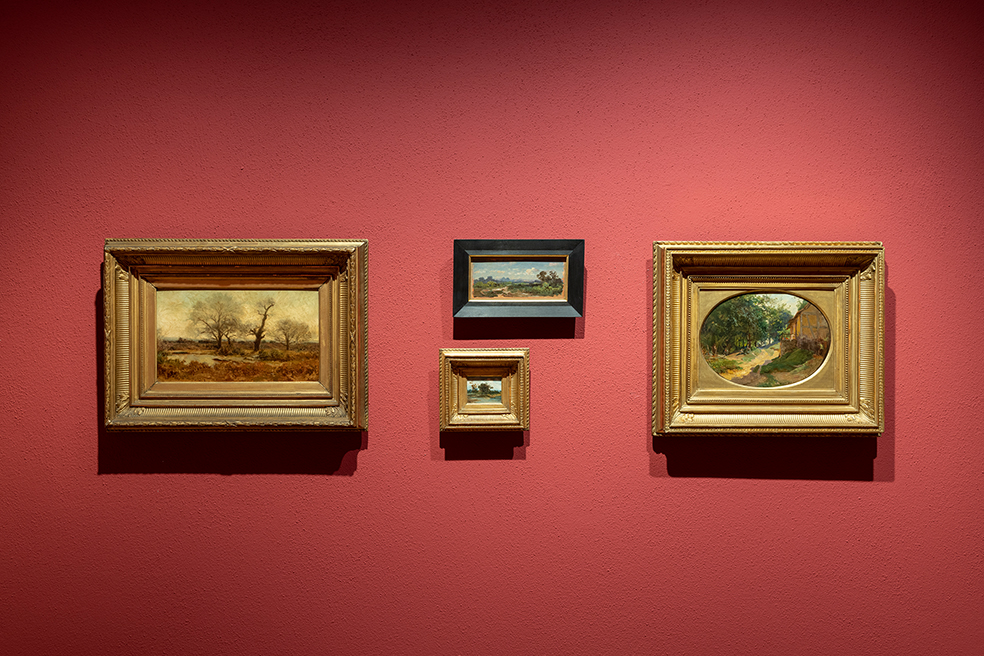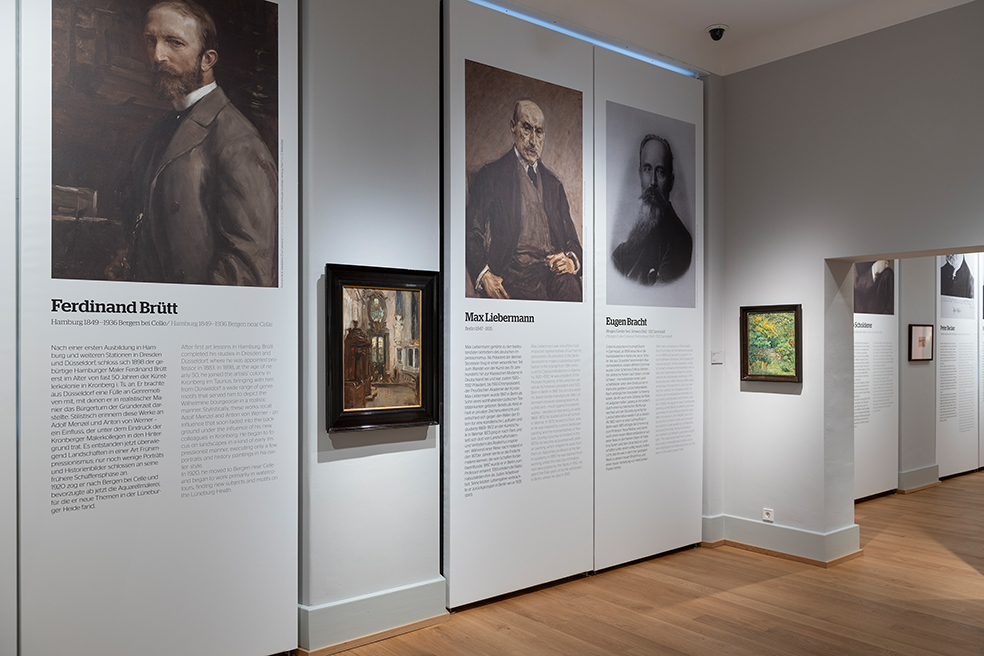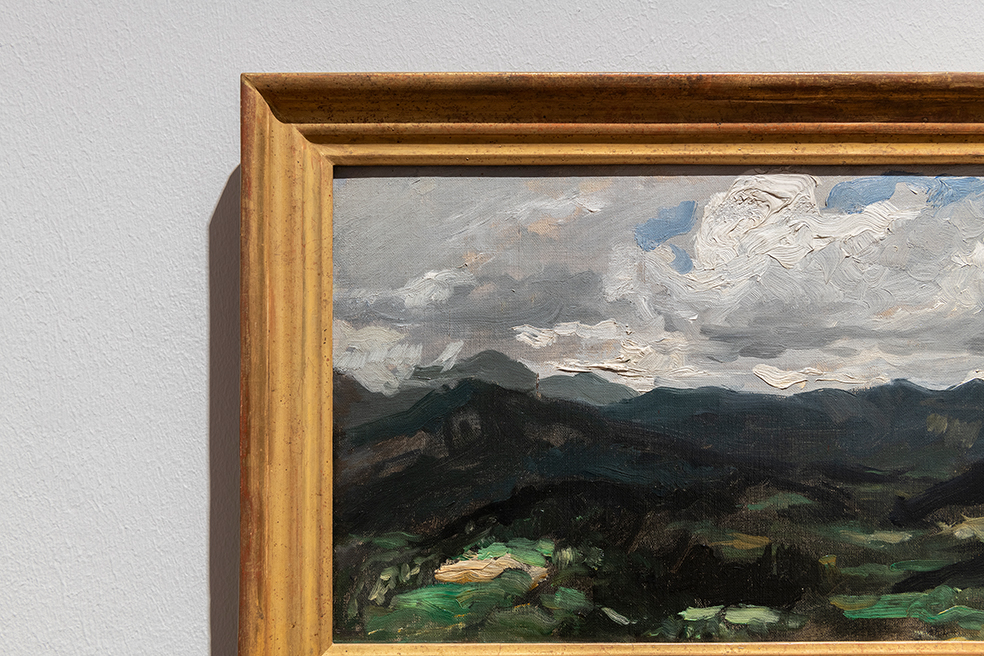A Passion for Art
EXHIBITIONS
Jan Baechle at Museum Wiesbaden. Photo: Museum Wiesbaden / Bernd Fickert
The “Depotfrühschoppen” Series – From Hobby to Institution
Jan Baechle is connected in myriad ways with “his” Museum Wiesbaden, not least as a long-standing member of the Board of Trustees of the Friends of the Museum. But it is the series of annual events fondly dubbed “Depotfrühschoppen” – where he talks about and shows works of art from the museum’s storerooms – that have earned him something akin to cult status. “Painters from Wilhelm Leibl’s Circle” was the title of the first series back in 2005, revealing his personal preference for 19th-century art, which is reflected in his own collecting habits. The popularity of the series is due not least to its broad approach, which allows the public to grasp the wider connections in art while learning more about specific artists. Some examples are “The Kronberg Painters’ Colony”, “The Weimar School of Painting”, “The Düsseldorf School”, “Rhenish Romantic Painting,” “Biedermeier Painting” or “Modern Sculpture in Imperial Germany”.
The special attraction of the series was that Jan Baechle not only gave a lecture on selected works from the museum’s storage facility, but also presented a number of them “in the flesh”, as it were. These were normally displayed in the Alte Bibliothek library on the day of the lecture, but sometimes the lecture venue was the art collection itself. In one case the exhibition remained on display for a whole week. A monographic lecture on Kaspar Kögler even included quite a number of loans from Stadtmuseum Wiesbaden. With this approach, which went well beyond what one would normally expect from a lecture, Baechle created a new format for public engagement at the museum. Basically, he was taking on the role of a curator, in this way interfacing with all the people involved. Thanks to his engaging personality, he made many friends at the museum over the years.
A Dual Perspective
His insider view likewise proved valuable for his work for the Friends, because it always allowed him to see things from both sides. The lecture series was a feature of the events programme promoted and actively supported by the Friends. Part of the ritual after the lectures was to get together to admire the art and to celebrate. Friederike Baechle decorated the museum’s Wandelhalle with flowers and poured the wine herself; the proceeds were donated to the Friends of the Museum. The series’ great success was due in good measure to Baechle’s talent for communicating a wealth of his erudite knowledge in a humorous way. Taking the deliberately anti-academic approach shared by many of the 19th-century artists in his collection, who preferred to paint freely rather than submit to external constraints, he entertained his audiences with juicy anecdotes, showing the artists from their human side. It was always a delight to visit the storage rooms and discuss the art with him. Martina Frankenbach, our librarian, had a special role to play here: it fell to her to supply Jan Baechle with the relevant literature and in this way to help make his lectures a success.
“There you go” (Jan Baechle)
In presenting the bequest of Jan and Friedericke Baechle the time has now come to say goodbye to a cherished institution. The collaboration with the collector couple was always marked by an atmosphere of great mutual trust. It is this that ultimately led them to donate their collection to the museum – not as part of Jan Baechle’s will, as originally planned, but directly and immediately, which is wonderful. Jan Baechle simply dropped off the paintings, remarking laconically, “There you go”.
The Baechles always chose the works for their collection themselves, without letting anyone influence them. I tried several times – unsuccessfully – to persuade them to purchase a work by Ludwig Knaus. In retrospect I’m glad, because a collection always needs to be authentic, and this one certainly is. Jan Baechle’s interest began early in his life. His path to 19th-century art was paved by a work by Wilhelm Steinhausen, which hung in his parents’ home. The couple’s first joint acquisition was a work by Fritz Wucherer, testifying to their special interest in the Kronberg painters’ colony. A close consultant on the collection was Christoph Andreas, the proprietor of the long-established Frankfurt art dealers J.P. Schneider and an old friend of the Baechles. And so the connection between art dealers and acquisitions at Museum Wiesbaden comes full circle!
To find out more about the Baechle Collection and how well it fits into the museum’s existing holdings one need only consult the catalogue. Here I would like to express my gratitude to the Friends of Museum Wiesbaden, who have made a substantial contribution to this publication and thus paid tribute in exemplary fashion to the engagement of one of their number.
Peter Forster
Custodian of collections, 12th to 19th century
Exhibition-Trailer
Catalogue

Exquisit — Kunst des 19. Jahrhunderts
Die Schenkung Baechle
Hrsg.: Peter Forster
144 Seiten mit 140 Abbildungen
29,0 x 25,0 cm, Hardcover
Berlin: Deutscher Kunstverlag 2021
ISBN: 978-3-422-98626-8
24,— Euro (an der Museumskasse)
Translation: Lance Anderson
